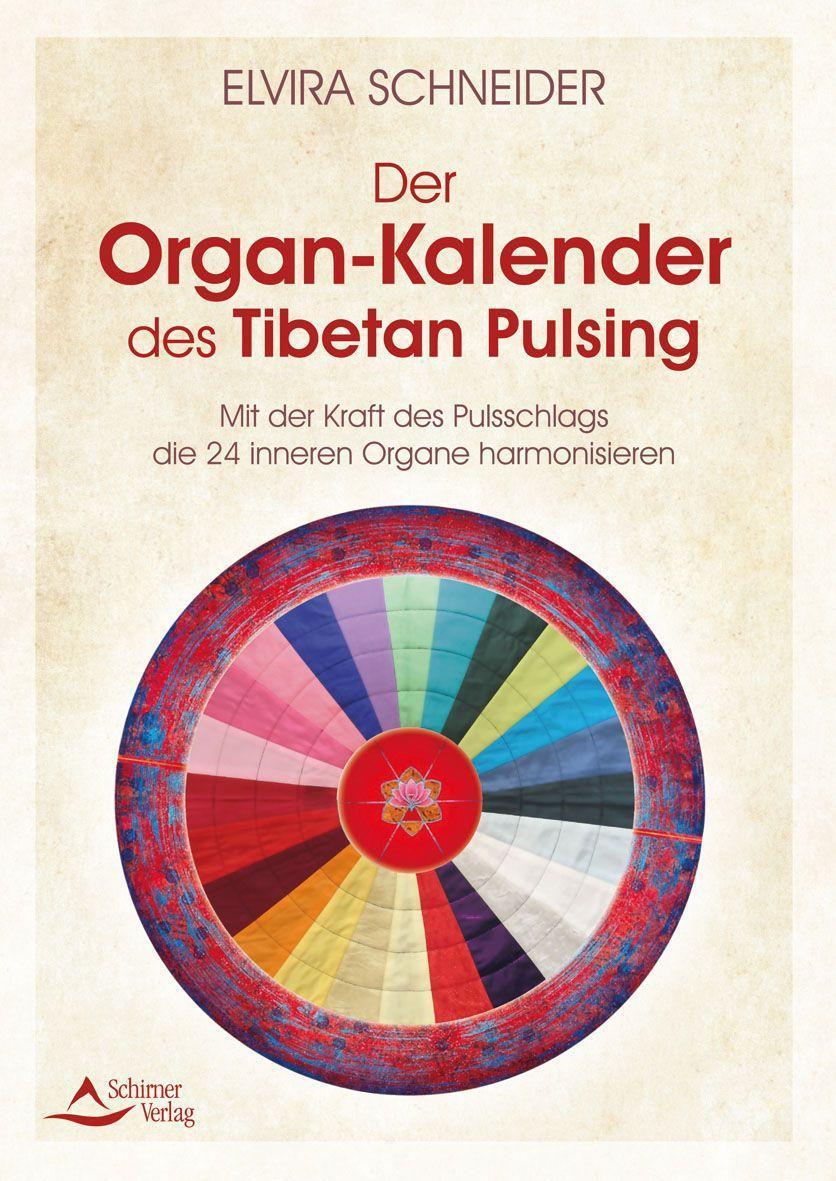
Schneider E: The organ calendar of Tibetan Pulsing
Harmonize the 24 internal organs with the power of the pulse.
Tibetan Pulsing is the pulse of life that wisely brings body and soul together. It has long been known in the monasteries of Tibet: Every cell in the body is made up of pulsating energy, and blockages can lead to physical symptoms. Tibetan Pulsing Healing brings these energies back into flow by applying gentle pressure to the body with the power of the pulse. The 24 internal organs, which include the heart, spleen and lungs as well as the hara, for example, and their specific issues receive special support for two weeks in the organ calendar through mudra meditations, healing currents and partner exercises for pulsing together. This stimulates the body's self-healing powers, harmonizes and vitalizes the body, and negative feelings give way to clarity and deep peace. Elvira Schneider, alternative practitioner and body therapist, has been using this traditional form of healing and energy work for over 30 years, having been initiated into it by the founder of the method himself. Her indispensable basic work is an introduction to Tibetan Pulsing, a comprehensive overview of the 24 internal organs and at the same time an instructive practical book with numerous exercises for advanced practitioners and therapists.
Bracelets, bracelets, bracelets, bracelets, chains
| age | Wrist circumference |
|
Newborn |
9 - 12 cm |
|
6 months - 3 years |
12 - 14 cm |
|
4 - 10 years |
14 - 15 cm |
|
Teenager, ladies (XS) |
15 - 16 cm |
|
Ladies (M) |
16 - 17 cm |
|
Ladies (XL) |
18 - 19 cm |
|
Men (M) |
18 - 20 cm |
|
Men (XL) |
21 - 22 cm |
The length of the bracelet may be 1 cm to 3 cm longer than the measured wrist circumference, depending on your taste.
Finger rings
| Ring size | Inner diameter | Inner circumference |
|
48 |
15,3 mm |
48 mm |
|
50 |
15.9 mm |
50 mm |
|
52 |
16.6 mm |
52 mm |
|
54 |
17.2 mm |
54 mm |
|
56 |
17.8 mm |
56 mm |
|
58 |
18.5 mm |
58 mm |
|
60 |
19.1 mm |
60 mm |
|
62 |
19.7 mm |
62 mm |
|
64 |
20.4 mm |
64 mm |
|
66 |
21.0 mm |
66 mm |
- Take a ring that fits well.
- Place it on a ruler and measure the inner diameter (from one inner edge to the other).
- Compare the diameter with the table to determine the ring size.
- Take a thin strip of paper or thread.
- Wrap it around the part of the finger where you want the ring to sit (not too tight).
- Mark the point where the ends meet.
- Measure the length of the strip in millimeters. This is the inner circumference.
- Find the right size in the table.
- Measure the finger size in the evening, as fingers swell slightly during the day.
- If you are between two sizes, choose the larger size.
- Make sure that the ring fits over the knuckle.


